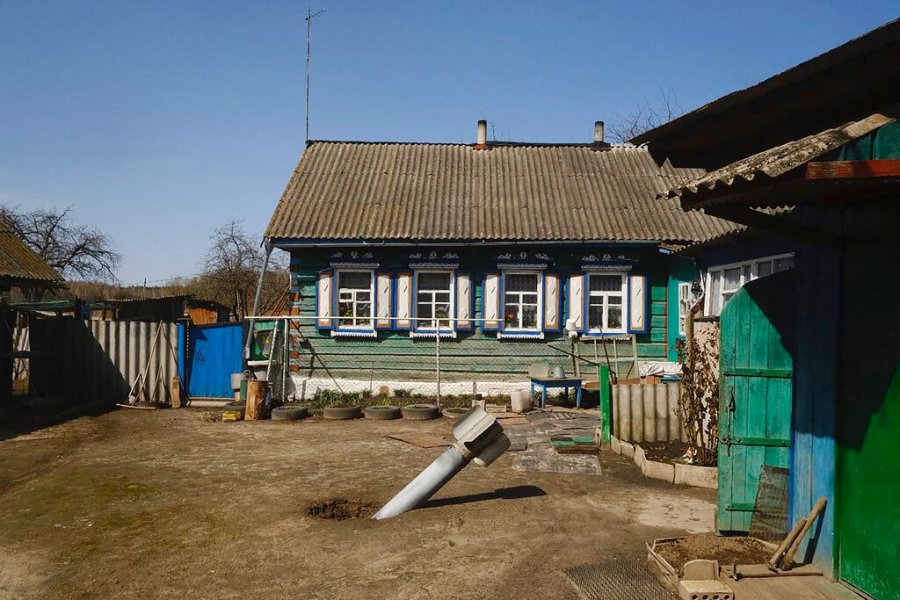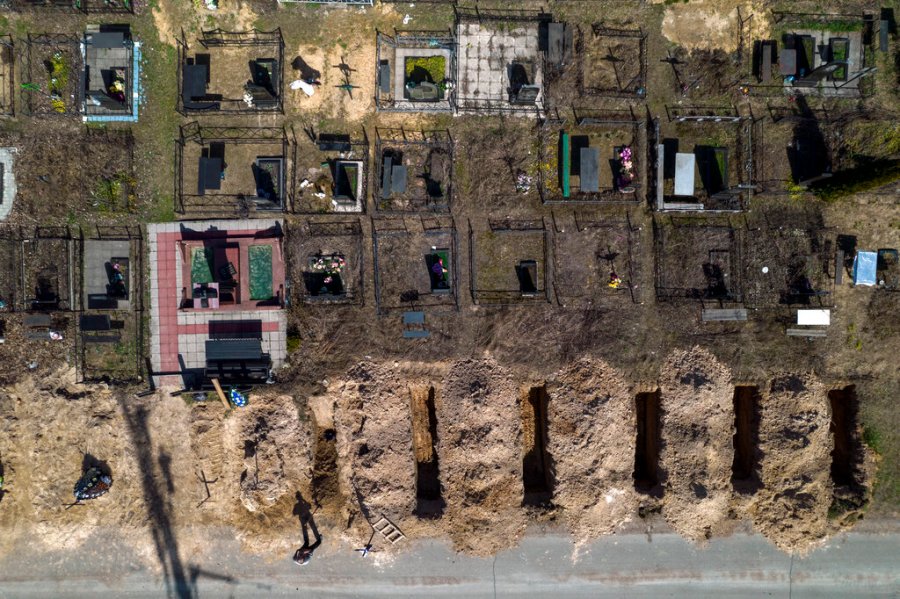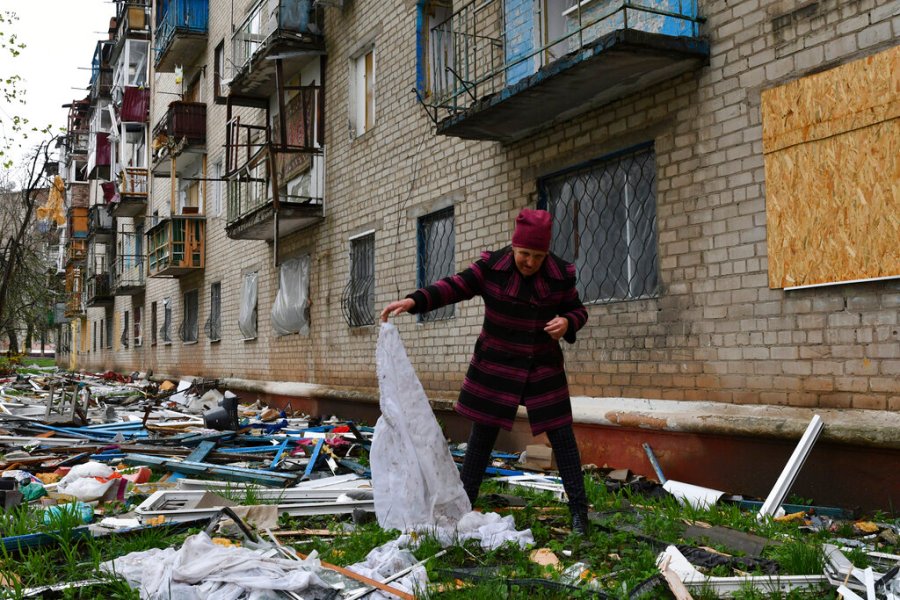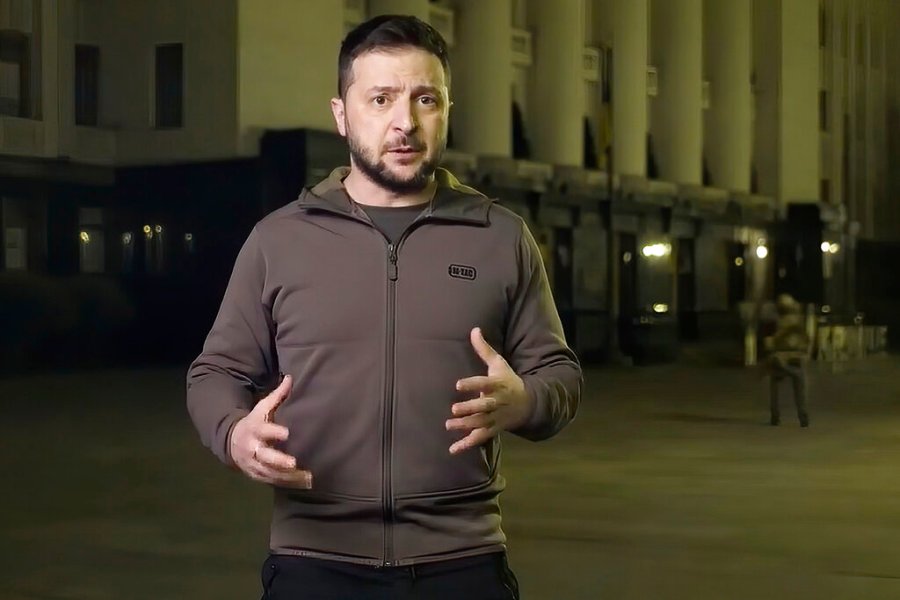KYIV, Ukraine (NewsNation) — More than 900 civilian bodies were discovered in Ukraine’s capital region following the withdrawal of Russian forces, the regional police chief said Friday.
Andriy Nebytov, the head of Kyiv’s regional police force, said the bodies had been abandoned in the streets or given temporary burials. He cited police data indicating that 95% of the casualties had died from sniper fire and gunshot wounds.
“Consequently, we understand that under the (Russian) occupation, people were simply executed in the streets,” Nebytov said. “The number of killed civilians has surpassed 900 — and I emphasize, these are civilians, whose bodies we have discovered and handed over for forensic examination.”
He added that more bodies were being found every day, under the rubble and in mass graves.
“The most victims were found in Bucha, where there are more than 350 corpses,” he said.
According to Nebytov, utility workers in Bucha had been gathering up and burying bodies in the Kyiv suburb while it remained under Russian control. Nebytov added that Russian troops were “tracking down” people who expressed strong pro-Ukrainian views.
The discovery of the civilian bodies comes as Russia’s Defense Ministry promised to ramp up “the scale of missile attacks” on Kyiv, a day after Moscow suffered a stinging symbolic defeat with the loss of the flagship of its Black Sea fleet.
The threat of intensified attacks on Kyiv came after Russian authorities accused Ukraine of launching airstrikes on residential buildings in Bryansk, a region that borders Ukraine and wounding seven people. Authorities in another border region of Russia also reported Ukrainian shelling.
Life in Kyiv has gradually returned to some normalcy after Russia failed to capture the capital and withdrew its troops in northern Ukraine to focus on a concentrated assault in the country’s east. However, a renewed bombardment could return the city’s residents to sheltering in subway stations and the steady wail of air raid sirens.
Ukrainian officials have not confirmed striking targets in Russia, and the reports by Russian authorities could not be independently verified. However, Ukrainian officials claimed their forces struck a key Russian warship with missiles on Thursday. If true, the claim would represent an important victory.
The guided-missile cruiser Moskva, named for the Russian capital, sank while being towed to port after suffering heavy damage under circumstances that remained in dispute. Moscow acknowledged a fire on board but not any attack. The U.S. and other Western officials could not confirm what caused the blaze.
The Moskva had the capacity to carry 16 long-range cruise missiles, and its removal reduces Russia’s firepower in the Black Sea. The warship’s loss in an invasion already widely seen as a historic blunder also was a symbolic defeat for Moscow as its troops regroup for an offensive in eastern Ukraine after retreating from much of the north.
During the first days of the war, the crew of the Moskva reportedly called on Ukrainian soldiers stationed on Snake Island in the Black Sea to surrender in a standoff. A widely circulated recording featured a Ukrainian soldier saying in response: “Russian warship, go (expletive) yourself.”
The Associated Press could not independently verify the Snake Island incident, but Ukraine and its supporters consider it an iconic moment of defiance. The country recently unveiled a postage stamp commemorating it.
If Ukraine hit the Moskva with missiles, the cruiser likely represents the largest warship to be sunk in combat since the 1982 Falklands War, which saw a similar-size cruiser called the ARA General Belgrano torpedoed by a British submarine, killing over 300 sailors on board.
The Neptune is an anti-ship missile that Ukraine recently developed based on an earlier Soviet design. The launchers are mounted on trucks stationed near the coast and, according to the Washington-based Center for Strategic and International Studies, can hit targets up to 175 miles away. That would have put the Moskva within range, based on where the ship was when the fire began.
Launched as the Slava in 1979, the cruiser saw service in the Cold War and during conflicts in Georgia and Syria and helped conduct peacetime scientific research with the United States. During the Cold War, it carried nuclear weapons.
On Thursday, other Russian ships in the northern Black Sea moved farther south after the Moskva incident, said a senior U.S. defense official who spoke anonymously to discuss internal military assessments.
While the U.S. could not confirm Ukraine’s claims of striking the warship, U.S. national security adviser Jake Sullivan called it “a big blow to Russia.”
Russia’s Defense Ministry said ammunition on board detonated due to a fire, without saying what caused the blaze. It said the “main missile weapons” were not damaged and that the crew, usually numbering about 500, abandoned the vessel. It wasn’t clear if there were any casualties. In addition to the cruise missiles, the warship also had air-defense missiles and other guns
President Volodymyr Zelenskyy told Ukrainians on Thursday they should be proud of having survived 50 days under Russian attack when the invaders “gave us a maximum of five.”
In his nightly video address, Zelenskyy called it “an achievement of millions of Ukrainians, of everyone who on Feb. 24 made the most important decision of their life — to fight.”
Listing the ways Ukraine has defended against the onslaught, Zelenskyy mentioned: “those who showed that Russian warships can sail away, even if it’s to the bottom” of the sea. It was his only reference to the Moskva.
Zelenskyy said he remembered the first day of the invasion when many world leaders, unsure whether Ukraine could survive, advised him to leave the country.
“But they didn’t know how brave Ukrainians are, how much we value freedom and the possibility to live the way we want,” Zelenskyy said.
On Friday, Marioupol’s city council said local residents reported that Russian troops are digging up bodies previously buried in residential courtyards and not allowing any new burials “of people killed by them.”
“A watchman has been assigned to each courtyard and is not allowing Mariupol residents to lay to rest dead relatives or friends. Why the exhumation is being carried out and where the bodies will be taken is unknown,” according to a statement on the messaging app Telegram.
The claim could not be independently verified.
Earlier this month, Mariupol Mayor Vadym Boychenko told The Associated Press that Russian forces have brought mobile cremation equipment to the city to dispose of the corpses of victims of the siege.
Boychencko said the Russian forces were taking many bodies to a huge shopping center where there are storage facilities and refrigerators. “Mobile crematoriums have arrived in the form of trucks: You open it, and there is a pipe inside and these bodies are burned,” he said.
Dwindling numbers of Ukrainian defenders in Mariupol are holding out against a siege that has trapped well over 100,000 civilians in desperate need of food, water and heating.
David Beasley, executive director of the U.N. World Food Program, said people are being “starved to death” in the besieged city and predicted the country’s humanitarian crisis will worsen as Russia intensifies its assault in the coming weeks.
He also warned in an interview with AP Thursday that Russia’s invasion of grain-exporting Ukraine risks destabilizing nations far from its shores and could trigger waves of migrants seeking better lives elsewhere.
The fluid nature of the conflict, which has seen fighting shift away from areas around the capital and toward eastern Ukraine, has made it especially difficult to reach hungry Ukrainians.
The WFP is trying to put food supplies in areas that could be caught up in the fighting, but Beasley acknowledged there are “a lot of complexities” as the situation rapidly evolves.
Mariupol’s mayor said this week that more than 10,000 civilians had died, and the death toll could surpass 20,000.
Mariupol’s capture is critical for Russia because it would allow its forces in the south, which came up through the annexed Crimean Peninsula, to fully link up with troops in the Donbas region, Ukraine’s eastern industrial heartland and the target of the looming offensive.
The Russian military continues to move helicopters and other equipment into place for such an effort, according to a senior U.S. defense official, and it is likely to add more ground combat units soon. But it’s still unclear when Russia might launch a full-scale campaign in the Donbas.
Moscow-backed separatists have been battling Ukraine in the region since 2014, the same year Russia seized Crimea. Russia has recognized the independence of the rebel regions in the Donbas.
Russia invaded on Feb. 24 and has lost potentially thousands of fighters. In addition, the conflict has killed untold numbers of Ukrainian civilians and forced millions more to flee.















